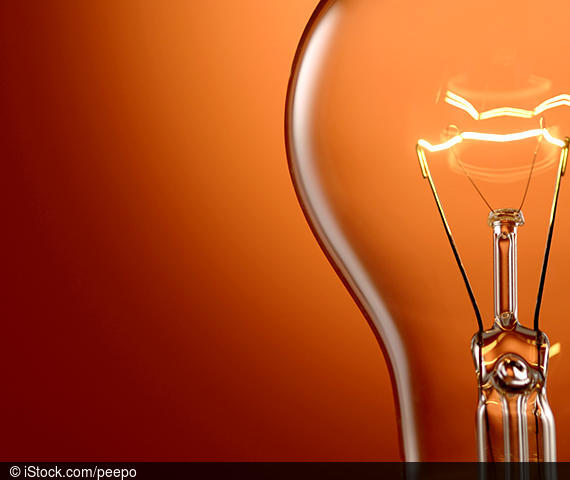German Businesses Intensify Investment in Innovation
ResearchIn 2015, German businesses increased their investments in innovation far more than previously planned. They invested a total of 157.4 billion euros in innovation – more than ever before. Compared to the previous year (2014: 145.0 billion euros) expenditure on innovation has increased by 8.8 per cent. These are the main findings of a current survey carried out by the Centre for European Economic Research (ZEW) in Mannheim on the innovation behaviour of German businesses on behalf on the Federal Ministry of Education and Research (BMBF). Since 1993 the survey has been carried out annually in collaboration with the infas Institute for Applied Social Sciences and the Fraunhofer Institute for Systems and Innovation Research (ISI).
As a result of the substantial increase in the innovation budget, German businesses have already reached the level of expenditure for 2016 a whole ahead of schedule. For the years 2016 and 2017, innovation spendings are expected to continue to rise by around 4 per cent. This development is being driven not only by large corporations but particularly by small and medium-sized enterprises (SMEs).
In three out of four main sectors, German businesses saw a rise in innovation expenditure in 2015. The research-intensive manufacturing industry spent a total of 101.2 billion euros, which represents almost 60 per cent of all expenditure on innovations, a 9 per cent increase compared to the previous year. Knowledge-intensive service providers increased innovation expenditure by 12 per cent (25.0 billion euros), while other service providers even increased their spending by 20 per cent (9.4 billion euros). According to the survey, only companies in other industrial sectors bucked the trend, experiencing a slight decrease of minus 0.2 per cent and reaching a total of 21.3 billion euros.
For 2016 and 2017, companies are planning to intensify their investment in innovation. In the second quarter of 2016, the surveyed businesses are planning to increase investment spending by 1.6 per cent to a total of 159.8 billion euros. The innovation budget varies, however, across the four main sectors. While research-intensive and knowledge-intensive service providers are expecting increases of 2.7 and 4.1 per cent respectively, enterprises in other industries and other service providers are planning on reducing innovation expenditure by 3.2 and 6.2 per cent respectively. For the period between 2015 and 2017, leading the charge behind the rise in the actual and planned investments were the vehicle manufacturing sectors, followed by IT-services, the chemical and pharmaceutical industry, the electrical industry as well as the mechanical engineering sector.
SMEs require additional incentives to innovate
The increase in innovation expenditure was not limited to large corporations; SMEs also increased their innovation budgets considerably in 2015. Compared to the previous year, spending on innovation increased by an above-average rate of 9.8 per cent. In this respect, the surveyed group of companies with less than 250 employees exhibited a significant expansion of investment activity. In contrast to the large corporations, however, the surveyed SMEs are planning to reduce their budgets for the upcoming years of 2016 and 2017. According to the survey, the investment level is set to decrease by 2.7 per cent in 2016 and by an additional 0.9 per cent in 2017. "Large corporations will continue to pursue their expansion strategies. This recently observed trend is, however, not likely to continue among SMEs. Evidently, the uncertainty over economic development is limiting investment activity," says Christian Rammer, the head of ZEW’s annual innovation survey. "In order to achieve a sustainable mobilising effect with regard to the innovation potential of SMEs, it is necessary to offer incentives for innovation."
The survey has also shown that innovation intensity, i.e. the share of turnover spent on innovation, reached a record high. In 2015, innovation intensity reached 3.0 per cent, the highest level recorded since the introduction of the survey. The electrical industry surpassed all other sectors, reaching – for the first time since 2011– a level of 10.4 per cent, the highest innovation intensity among the surveyed industries. In the automotive industry, which used to be the driving force behind investment activity, the proportion of turnover spent on innovation was at 9.9 per cent, and remained on the same level as the previous year. The survey has further shown that the technical service providers recorded a significant rise from 6.5 per cent to 8.5 per cent, which is mainly attributable to the increase in investment spending from R&D service providers. At 8.1 per cent, the chemical and pharmaceutical industry also recorded a very high level of innovation intensity. High levels of innovation intensity were also observed in the IT and telecommunications sector as well as the mechanical engineering sector, which recorded an intensity of 7.1 per cent and 5.9 per cent respectively.
For further information please contact:
Dr. Christian Rammer, Phone +49(0)621/1235-184, E-mail rammer@zew.de
